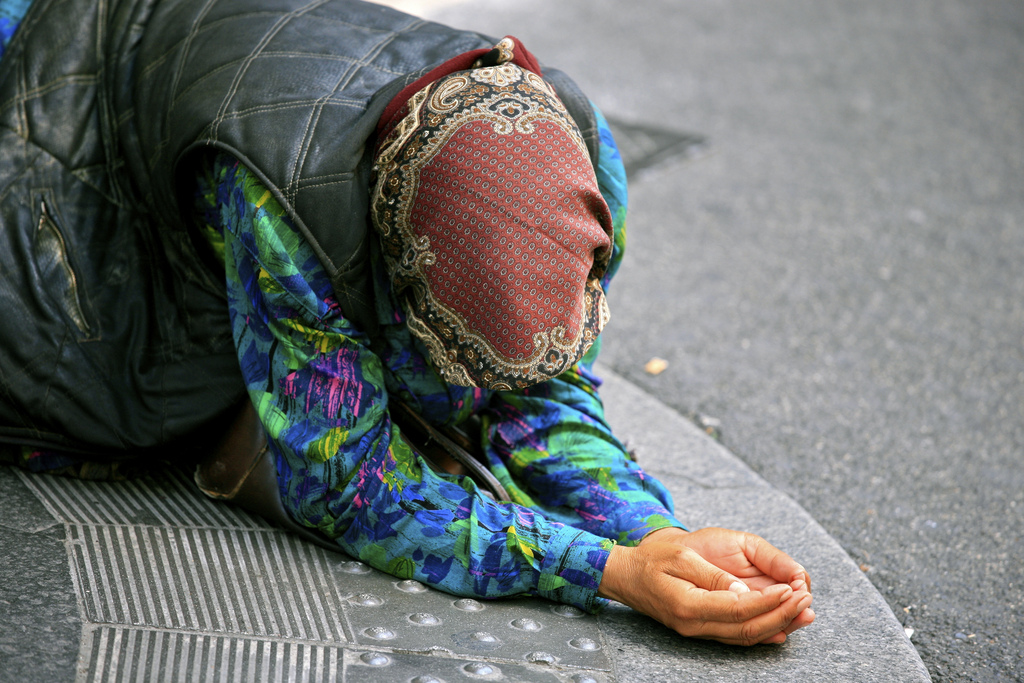
Poverty can be eradicated by 2050 as proposed by the Millennium Development Goals, according to Muhammad Yunus. Founder of Grameen Bank in Bangladesh, he believes that microcredit is the answer. Lending small amounts of money to people who are too poor or marginalized to qualify for bank loans in order to further their small businesses is his solution to eradicate poverty. This social business model is growing in popularity in locales as diverse as Mexico, Brazil, South Africa, Bangladesh, and Indonesia. There are even a few microfinance institutions (MFIs) in the United States. However, as the industry continues to grow, many, including Yunus himself, have doubts as to the direction in which it is heading. While microcredit is not charity (Grameen Bank is a for-profit institution), Yunus argues that profiting off of the poor is immoral. That said, two MFIs stand on the opposite side of a dividing line among the microfinance world. Banco Compartamos in Mexico and SKS in India are the only two MFIs in the world to have held initial public offerings (IPOs), meaning that they have made the transition from NGOs to commercialized banks that are publicly traded. Yunus says that this direction ought not to be furthered, considering that these banks profit off of the poor and directly contradict the social mission of microcredit in general. The chief executives of these banks argue that commercialization is the only way to greatly increase equity by attracting investors who ultimately fund their lending practices.
Mexico’s Banco Compartamos is the first MFI to hold an IPO. They argue that their struggle to procure funding for their bank warrants the shift. Begun as a non-profit organization, Compartamos transitioned first to commercial banking before holding this IPO. “It’s marvelous to have one creditor but it’s marvelous to have one million creditors,” Carlos Labarthe, one of the two chief executives of Compartamos said, “and that’s where we really start to change the face of opportunity.” The “Two Carloses,” as the two chiefs of Compartamos are known in the microfinance world, argue that the more investment capital they can find, the more clients they can reach with credit. Similarly, SKS held their IPO as recently as August of 2010. This offering was surrounded by controversy, as a wave of suicides by SKS borrowers in Andhra Pradesh in India, the capital of microfinance in India and home of SKS headquarters, had critics wondering. SKS gives similar reasoning for their commercialization. Vikram Akula, founder and chief of SKS, at one point considered taking out an extra mortgage on his own home in order to raise the capital necessary to grow the MFI at a rapid rate. This rapid scaling is the key to his success, and the centerpiece of his business model. Both SKS and Compartamos, like most MFIs, have goals of reaching millions of clients. This lofty social mission is tough to achieve rapidly without high levels of investor capital to start up. “Many believe that microfinance should be a ‘social business,’ meaning investors should get their investment back but no profits,” SKS promotes on their website. However, “SKS has a different view. If the microfinance industry is going to provide the estimated INR 2,399.35 billion (USD 51.4 billion) of credit needed by the poor, it must tap commercial capital markets – and that means structuring microfinance so that investors can expect a return on their investment.” Proponents of the commercialization method argue that Yunus’ Grameen Bank, founded in 1976 and which is self-sustaining, has had time to grow at a slow and steady rate. They argue that commercialization is the only way to fairly compete in the world market.
But at what price? Sky-high interest rates lead critics of the commercialization approach such as Yunus to cringe. While interest rates in the microcredit world are traditionally high due to higher maintenance costs than the traditional banking system, Compartamos especially charges usurious rates. Because MFIs go to their clients to collect payments and to disburse loans, lend minute amounts at a time, and face a higher cost of credit themselves in order to finance their lending, interest rates that are considered “fair” average around 20 percent. Compartamos charges close to a 100 percent annual interest rate.
While the Two Carloses argue that their clients are willing to pay that price, citing their high retention rate as well as high maintenance costs, critics disagree. Yunus argues that demand for microcredit does not behave in the same manner as “normal” economics would suggest. Microcredit borrowers are ineligible to borrow from traditional borrowers in most cases making microcredit their only option. These borrowers are also often uneducated, which makes it difficult for them to decide between options. When it is a question of survival, microcredit borrowers will usually opt for this chance.
In terms of attracting large investments, Grameen calls both Compartamos’ and SKS’s bluffs. Grameen is more successful, reaching more borrowers and with more branches than either of the latter, without having sought investment or having held an IPO. The secret to Grameen’s success is the difference between microcredit and microfinance. While credit means solely lending, the practice of microfinance incorporates savings and insurance products as well. By accepting cash deposits into savings accounts (still on the same micro scale), Grameen is self-sustainable. The inflow of cash enables Grameen’s branches to have a large enough store of cash to be able to disburse payments without ever borrowing money. Grameen expanded at enormous rates, now reaching an incredible 62 percent penetration rate of the poor in Bangladesh.
MFIs that are not commercialized banks, often referred to as NGO-MFIs, often have trouble obtaining sufficient funding to expand. Rapid growth is the goal of any MFI, with missions to end poverty coupled with a global “Bottom Billion” (according to Paul Collier’s titular book) of individuals living under the poverty line of $1.25 per person per day. SKS Microfinance, an Indian commercialized MFI, claimed growing pains before commercialization and their recent IPO. The microcredit market in Bolivia is said to be at capacity, and the industry there features fierce competition, similar to the competition which is causing cycles of suicides in Andhra Pradesh, India. The leading NGO-MFI is Grameen Bank, which was founded as a non-profit organization and quickly became incorporated under the auspices of the government-run Bengali Central Bank. Grameen funded its early expansion with loans from the Central Bank and others, quickly becoming independent and taking their last loan in 1995. After this point, Grameen was self-sustainable. The MFI lent cash fully supported by deposits by the same borrowers. According to Grameen, 150% of outstanding loans are financed by deposits. This is what constitutes microfinance as opposed to microcredit; finance incorporates savings accounts and other forms of financial tools for the poor. Grameen even provides a life insurance policy. NGO-MFIs cannot be considered “non-profit” because Grameen and its affiliates do bring in profit. However, because Grameen is self-sustaining, it lacks the necessity felt by commercialized MFIs to seek investor capital. Grameen’s village banking model utilizes social collateral rather than traditional banking methods of requiring monetary or material collateral; borrowers must form groups of five in order to take out a loan. The pressure from the group is collateral enough to make repayment rates high, with Grameen’s repayment rate at 97%. Commercialized banks often begin as NGO-MFIs.
Further, the secondary IPO that Compartamos held did not benefit the company directly. The sale cost the company a large sum of money while providing profit only to the investors who sold their shares. The impoverished borrowers saw not one penny of income from the sale. The IPO which SKS held only a few months ago was similar. For SKS, analysts doubted whether the company would be profitable enough to exist on the open market.
Seeking private investment may be the easier route for an MFI to take, but as Yunus says, it demeans the image and product that the organization is attempting to put out. While microfinance is meant to raise the poor out of poverty, equally important to this goal is the image and awareness that high profile MFIs like Grameen, Compartamos, and SKS bring to the subject of poverty. In beginning the debate over whether or not MFIs should profit off of the poor, commercialization detracts in a major way from their own goals. Whether profiting off of the poor is immoral or not is relevant only in the eye of the beholder. In bringing this debate to the forefront, Compartamos and SKS simply highlight and, in a way, confirm well-intentioned people’s fears about microfinance robbing the poor rather than enriching them. This deters the popular movement from providing these services to poor people globally in favor of a better solution.
The microfinance industry will be able to better achieve their collective mission by refocusing on the eradication of poverty. What commercialized MFIs such as Compartamos and SKS fail to do is to measure their impact in a qualitative way. While high repayment rates look good on paper, they do not tell the whole story. Microcedit providers must assure that borrowers are actually being raised out of poverty, and not simply coming back for loan after loan, falling farther and farther into a debt cycle. Interest rates, while held high by the costs of the industry, must become reasonable and fair. Compartamos and SKS could learn from Yunus and his Grameen Bank and strive to find better means to finance their loans than private investors seeking high returns. The Millennium Development Goal of halving poverty by 2015 and eradicating it by 2050 are achievable if the microfinance industry does not lose focus.
________________________
Anand, Malika, and Michael Rosenberg. “Are We Overestimating Demand for Microloans?”CGAP.org. CGAP, Apr. 2008. Web. 6 Oct. 2010.
Cole, Shawn, and Theresa Chen. “SKS Microfinance.” Harvard Business Publishing (2009). Web. 19 Oct. 2010. http://cb.hbsp.harvard.edu/cb/web/he/product_view.seam?R=208137-PDF-ENG&T=EDC&C=PURCHASED_MATERIALS&CD=6854039&CS=a4d4eea4331cdb6436c3b5f2ded9393d.
Malkin, Elisabeth. “Microfinance’s Success Sets Off a Debate in Mexico.” New York Times. 5 Apr. 2008. Web. 26 Oct. 2010. http://www.nytimes.com/2008/04/05/business/worldbusiness/05micro.html.
“SKS: Our Work: How We Do.” SKS: Home. Web. 19 Oct. 2010. http://www.sksindia.com/how_we_do.php#capital.
World Bank. “Muhammad Yunus Challenges Compartamos Bank.” Private Sector Development Blog – The World Bank Group. 1 Oct. 2007. Web. 27 Oct. 2010. http://psdblog.worldbank.org/psdblog/2007/10/muhammad-yunus-.html.



